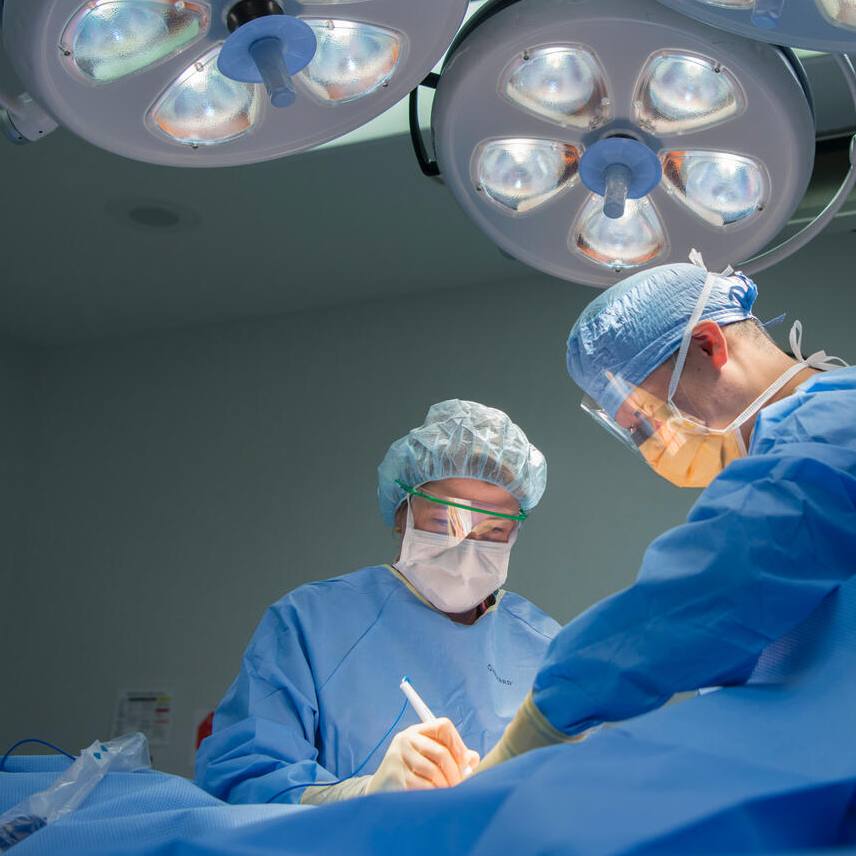-
Weekend Wellness: Carefully consider treatment options when diagnosed with early-stage breast cancer
DEAR MAYO CLINIC: I just found out I have stage I breast cancer, and I’m trying to decide on the kind of surgery I’ll have. My doctor says I could have either a mastectomy or a lumpectomy. I’m leaning toward a lumpectomy. But how do you know if a lumpectomy is enough treatment? I’m worried the cancer could come back. ANSWER: Research has shown that for women with early-stage breast cancer, survival rates are very similar between those who choose to have a lumpectomy followed by radiation therapy and those who choose a mastectomy. Choosing which surgery to have is a very personal decision. It is important to take time to carefully consider your options.
ANSWER: Research has shown that for women with early-stage breast cancer, survival rates are very similar between those who choose to have a lumpectomy followed by radiation therapy and those who choose a mastectomy. Choosing which surgery to have is a very personal decision. It is important to take time to carefully consider your options.
A lumpectomy is surgery that removes the breast cancer along with a rim of normal tissue around the tumor, called the margin. This surgery allows you to keep the rest of your breast tissue.
A mastectomy involves removing most of the breast tissue from your breast. With early-stage breast cancer, radiation is not recommended after a mastectomy unless cancer cells are found in the lymph nodes or the tumor is larger than anticipated.
Breast reconstruction is an option after mastectomy. You can have the reconstruction done during the same surgery as the mastectomy or at a later time, depending on what you prefer. Reconstruction options include using a breast implant or using your own tissue taken from another area of your body. In some cases, you may be able to have a mastectomy that saves your own nipple and the dark area around the nipple (the areola). Doing this can help maintain a more natural look to your breast after reconstruction.
Some women decide to have a lumpectomy because they prefer to keep as much of their natural breast as possible. For early-stage breast cancer, a lumpectomy often has a good cosmetic result and does not significantly change the way the breast looks. But this depends on the size of the tumor and the size of your breast. Lumpectomy surgery also takes less time and is not as invasive as a mastectomy. Recovery time after a lumpectomy is shorter than after a mastectomy.
Because a significant amount of breast tissue remains after a lumpectomy, to reduce your risk of the cancer returning in that breast, radiation therapy is recommended. A type of radiation therapy called whole breast external beam radiation is most commonly used after lumpectomy. The amount of radiation therapy needed after a lumpectomy usually takes three to six weeks to administer. Radiation typically is given five days a week, with each appointment lasting one hour or less.
Partial breast radiation is a newer technique for certain small, low-grade tumors. It allows the radiation therapy to be completed over five days. This treatment can be performed with external beam radiation, or it can be delivered through a catheter placed in the breast at the time of surgery. If you choose a lumpectomy, talk to your doctor about the kind of radiation therapy that is best for your situation.
After a lumpectomy and radiation therapy, you still need mammograms once a year on both breasts to screen for cancer. After a mastectomy, mammography is no longer necessary on the surgically treated side, even if you have breast reconstruction. You will need mammograms on your remaining breast.
As you think about which surgery to choose, discuss all the benefits and drawbacks with your doctor. Ask questions and address any concerns you have. Do not move forward until you are comfortable that you have reviewed all the information you need to make a well-informed decision that’s right for you. — Judy C. Boughey, M.D., Surgery, Mayo Clinic, Rochester, Minn.







